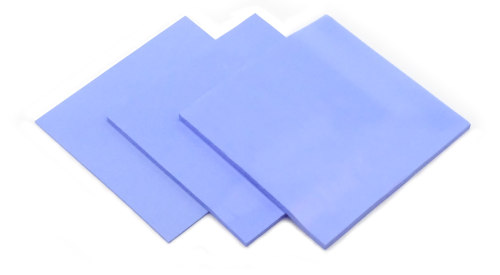
Understanding thermal pads and their thermal conductivity
A thermal pad is a thin, flexible and usually silicone-based material that is made of a thermally conductive material. Thermal pads are designed to transfer heat from one surface to another, allowing for better heat dissipation in a small space. They are typically used between a heat sink and a CPU, GPU or other heat-generating device to allow better heat transfer and dissipation.
As a particularly important component for thermal management of electronic devices, thermal pads provide insulation between components and a thermal bridge for heat dissipation. In today’s world where components are getting smaller and smaller, thermal pads are becoming increasingly important for maintaining the temperature of devices.
As they come in different thicknesses and conductivities the right thermal pad can be used for every situation. However, if it is too thick, heat transfer may be impaired. Also important is the conductivity level (W/mK) of the thermal pad, as it determines how much heat can be transferred through the pad itself. Thermal pads with higher conductivity can help reduce the thermal resistance between two components, allowing for more efficient heat transfer.
What are the advantages of thermal pads?
1. Thermal pads are an efficient and cost-effective solution to increase heat transfer between two components.
2. They are easy to install and remove.
3. They have low thermal impedance and transfer heat quickly and efficiently.
4. Thermal pads are available in different sizes and thicknesses to fit any design.
5. They are durable and can be used for several years.
